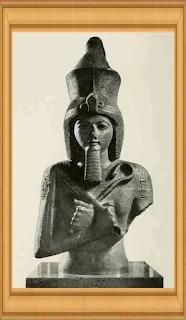The civilization of the ancient Egyptians
 |
| The civilization of the ancient Egyptians |
" Oh, Egypt, Egypt ! fables alone will be thy future history, wholly incredible to later generations, and nought but the letter of thy stone-engraved monuments will survive." The later generations are realizing the value of these stone-engraved monuments.
The fables, too, are found to be very suggestive; indeed, frequently they embody the essence of the truth, whereas history recounts only the external.
A sympathetic understanding is the antidote to incredulity and will infuse the spirit into the letter of the stone-engraved monuments. The most striking characteristic of the civilizations of the world, especially of the West, is their evanescent nature. A State, to some extent primitive, comes to the front, evolves rapidly, reaches its zenith and then declines. A few hundred years covers the whole process. Carthage, Greece and Rome " have their day and cease to be." There is no stability, no permanence.
On the contrary, however, the most notable quality of the Egyptian civilization is its permanent character. Instead of lasting only a few hundred years, it endures for thousands; and whereas in other countries the entire evolution of the civilization can be traced from its primitive beginnings, through infancy, maturity, old age and death, in Egypt there appears to be no beginning, the civilization apparently starts mature; and although within it there are minor cycles of decline and renaissance, still the initial starting-point has not been found; it ever recedes down '" the arches of the years " into the night of time. But however distant, there must have been a starting point, and the problem requiring solution resolves itself into two alternatives. Did this magnificent civilization evolve in Egypt from primitive beginnings, or was it transplanted in an infinitely remote epoch from some other land?
An answer is provided by the tradition of the race, stating that the Divine Kings, who ruled over their ancestors in the Nile Valley tens of thousands of years ago, taught them all the arts and sciences. This answer presents two more questions. Who were the Egyptians, and were these Divine Kings of the same or of another race?
Careful study of the subject from all points of view leads to the conclusion that there were two predynastic races: one small and allied to the negro; the other tall, slightly built, with aquiline features, coming from the West, and allied to the Libyan. There was also the dynastic race which was very similar in physique to this last, and which came down the Nile from the South. This is in accordance with their own account, which speaks of three races.
The language shows Semitic affinities; but this in nowise contradicts the evidence of science as to the race-type, indeed it affords further proof.
The parent stock of the Egyptian and Semitic races originated in North Africa, west of Egypt. In prehistoric times a portion migrated to Arabia and evolved the Semitic characteristics; the portion remaining in Africa gave rise to those races of which the Egyptian became the most important and the most characteristic, and which, migrating from the West into the Nile Valley, evolved the most magnificent civilization on record.
The personal appearance and physique have been preserved for posterity on the monuments and tomb decorations; the annals add details of their private life, customs and character. The aristocrat was tall and slender, and had a noble and dignified Their Temperament and Domestic Life carriage ; he had broad shoulders, muscular limbs, slight hips< and fine hands and feet. The shape of the face is marked by the length and breadth being nearly the same; the nose is straight or aquiline, the eyes large and dark, the hair wavy, and the teeth small, even and very white ; the whole expression is charming, gracious and yet proud. The peasant was not so tall but had the characteristic proportions of the face, the broad shoulders, and the slight hips that distinguished the race.
Contents of the book:
Download The civilization of the ancient Egyptians 10.3 MB
Contents of the book:
CHAPTER I
The Egyptians, their Temperament and Domestic Life . . . i
The Egyptians, their Temperament and Domestic Life . . . i
CHAPTER II
Education ......... 14
Education ......... 14
CHAPTER III
Professions and Occupations . . . . , '23
Professions and Occupations . . . . , '23
CHAPTER IV
Amusements ...... ... 47
Amusements ...... ... 47
CHAPTER V
Architecture — Pyramids and Temples . . . « .64
CHAPTER VI
Sculpture and Painting ....... 89
Sculpture and Painting ....... 89
CHAPTER VII
Science — Engineering Skill ....... 99
Science — Engineering Skill ....... 99
CHAPTER VIII
Medicine . . . . . . . . .111
Medicine . . . . . . . . .111
CHAPTER IX
Science — Astronomy . . . . . .. . ' 115
CHAPTER X
Government and Laws . . . . . . .121
Government and Laws . . . . . . .121
CHAPTER XI
Religion . . . . . . . . .127
Religion . . . . . . . . .127
CHAPTER XII
Literature ......... 151
Literature ......... 151
Index .......... 163
vii
Download The civilization of the ancient Egyptians 10.3 MB

